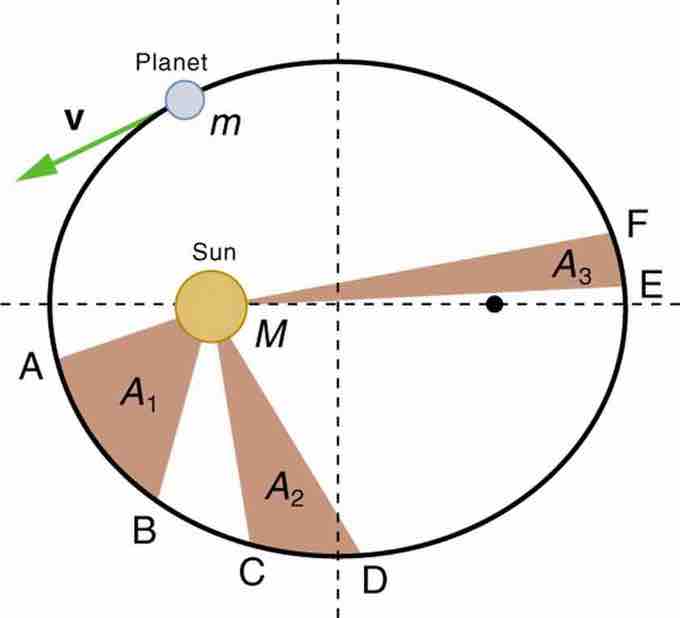Newton's Universal Law of Gravitation
Newton's universal law of gravitation states that every particle in the universe attracts every other particle with a force along a line joining them. The force is directly proportional to the product of their masses and inversely proportional to the square of the distance between them. For two bodies having masses
The gravitational force is responsible for artificial satellites orbiting the Earth. The Moon's orbit about Earth, the orbits of planets, asteroids, meteors, and comets about the Sun are other examples of gravitational orbits. Historically, Kepler discovered his 3 laws (called Kepler's law of planetary motion) long before the days of Newton. Kepler devised his laws after careful study (over some 20 years) of a large amount of meticulously recorded observations of planetary motion done by Tycho Brahe (1546–1601).
Kepler's Laws
- The orbit of each planet about the Sun is an ellipse with the Sun at one focus.
- Each planet moves so that an imaginary line drawn from the Sun to the planet sweeps out equal areas in equal times.
- The ratio of the squares of the periods of any two planets about the Sun is equal to the ratio of the cubes of their average distances from the Sun.

Kepler's Second Law
The shaded regions have equal areas. It takes equal times for
Ellipses and Kepler's First Law
(a) An ellipse is a closed curve such that the sum of the distances from a point on the curve to the two foci (
Derivation of Kepler's Third Law For Circular Orbits
Kepler's 3rd law is equivalent to:
Let us consider a circular orbit of a small mass
The mass
Now, to get at Kepler's third law, we must get the period
Substituting this into the previous equation gives:
Solving for
Since